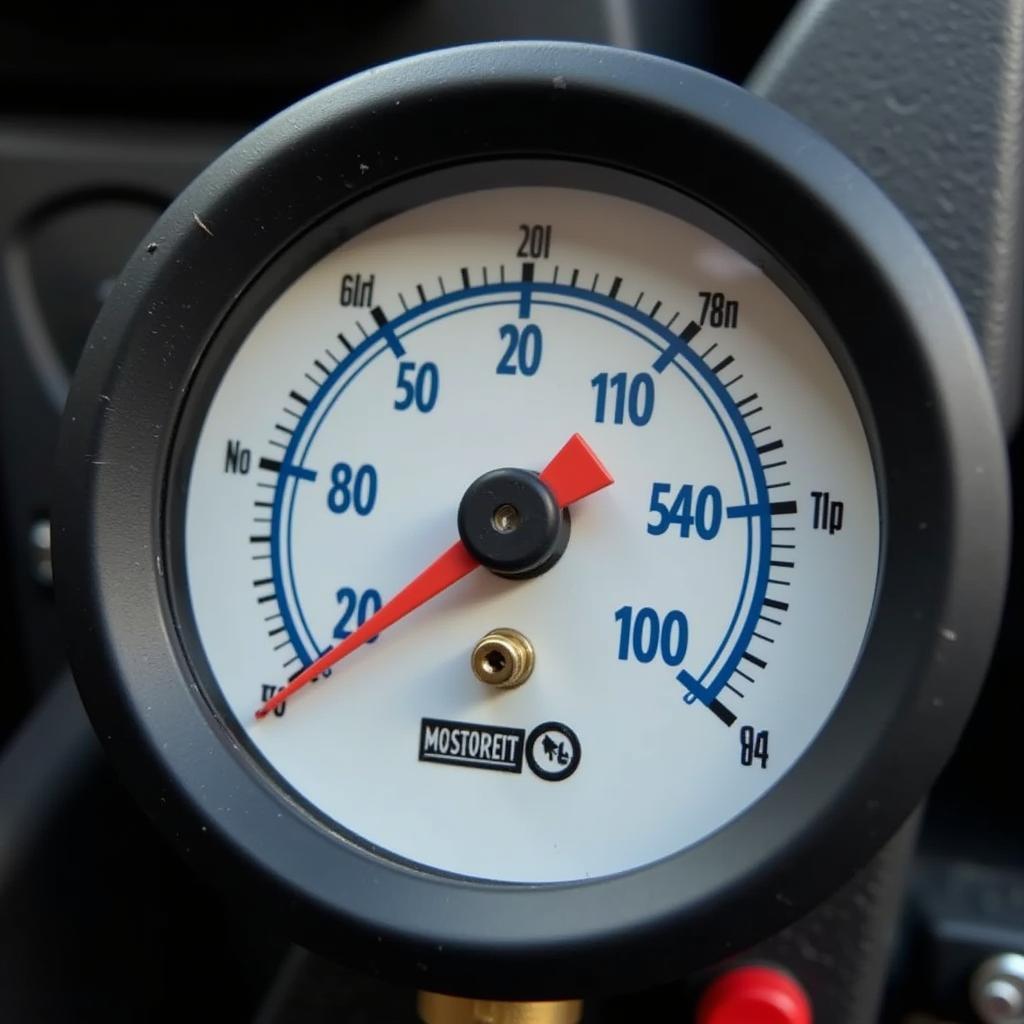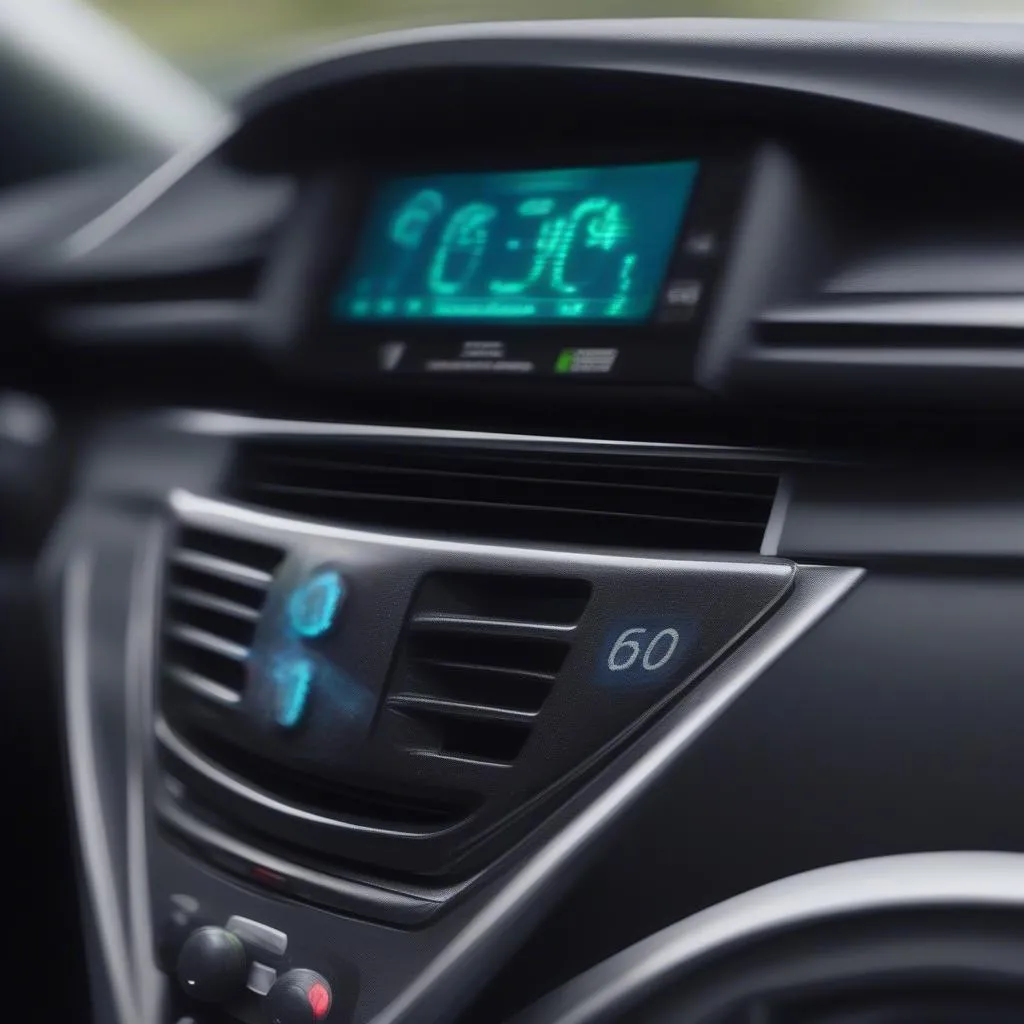The air brake pressure warning switch is a critical safety component in vehicles equipped with air brake systems, commonly found in heavy-duty trucks and buses. This switch plays a vital role in alerting the driver of any potential issues with the air brake system’s pressure, ensuring safe and efficient braking.
What is an Air Brake Pressure Warning Switch?
This small but mighty switch acts as a pressure sensor and a warning device in one. It constantly monitors the air pressure within the air brake system. When the pressure drops below a predetermined safe level, the air brake pressure warning switch triggers an audible alarm (often a buzzer) and illuminates a warning light on the dashboard. This immediate alert gives the driver ample time to address the low air pressure situation, preventing potential braking failure.
Common Causes of Air Brake Pressure Warning Switch Activation
While the air brake pressure warning switch itself can malfunction, its activation often signals an underlying issue within the air brake system. Here are some common culprits:
- Air Leaks: Leaks in the air lines, fittings, or air compressor can cause a gradual or sudden drop in air pressure.
- Faulty Air Compressor: A malfunctioning air compressor might not be able to build and maintain the required air pressure.
- Worn Brake Components: Worn brake shoes, drums, or chambers can lead to air pressure loss.
- Clogged Air Dryer: The air dryer removes moisture from the system. If clogged, it can restrict airflow and affect pressure.
- Malfunctioning Trailer Brake Valve: Issues with the valve controlling air flow to the trailer brakes can impact overall system pressure.
Troubleshooting an Air Brake Pressure Warning Light
 Air Brake Pressure Gauge Reading
Air Brake Pressure Gauge Reading
If your air brake pressure warning light illuminates, it’s crucial to address the issue promptly. Here’s a step-by-step guide to help you troubleshoot:
- Safety First: Find a safe location to pull over immediately.
- Check Gauge Readings: Inspect the air pressure gauge on the dashboard. Note the pressure reading.
- Listen for Leaks: Turn off the engine and listen carefully for any hissing sounds, which may indicate an air leak.
- Inspect Air Lines and Fittings: Visually examine the air lines, hoses, and fittings for signs of damage, cracks, or loose connections.
- Check Air Compressor Function: With the engine running, observe the air compressor for proper operation and pressure buildup.
- Inspect Brake Components: If possible, visually check the brake shoes, drums, and chambers for excessive wear.
When to Seek Professional Help
While some air brake issues may be resolved with basic troubleshooting, it’s crucial to seek professional assistance if:
- You are unable to identify the cause of the low air pressure.
- The warning light remains illuminated despite addressing potential issues.
- You suspect a problem with the air brake pressure warning switch itself.
A qualified mechanic specializing in heavy-duty vehicles can diagnose the problem accurately using specialized equipment and perform the necessary repairs.
Importance of Regular Maintenance
 Truck Undergoing Maintenance Check
Truck Undergoing Maintenance Check
Regular maintenance plays a crucial role in preventing air brake system issues. Adhering to a routine maintenance schedule that includes the following can help prevent unexpected air brake problems:
- Regular Air System Inspections: Check for leaks, damage, and proper connections.
- Air Dryer Service: Replace the air dryer cartridge at recommended intervals.
- Brake Component Inspections: Regularly inspect brake shoes, drums, and chambers for wear.
- Professional System Checks: Have a qualified mechanic perform a comprehensive air brake system inspection at least annually or as recommended by the vehicle manufacturer.
Conclusion
The air brake pressure warning switch is a critical safety feature in vehicles equipped with air brake systems. Understanding its function and recognizing the warning signs of potential problems is essential for ensuring safe braking. Regular maintenance and prompt attention to warning signals can help prevent costly repairs and ensure the optimal performance of your vehicle’s air brake system.
Don’t hesitate to seek professional help from experienced technicians if you encounter persistent or complex air brake issues. For instance, you can find resources on specific vehicle models like the 2002 Cadillac EXT brake pressure warning switch or information on issues like all brake warning lights Lexus CT200h. Remember, safety should always be the top priority when it comes to maintaining your vehicle’s braking system.
FAQs
1. What should I do if my air brake pressure warning light comes on while driving?
Pull over to a safe location immediately. Check your air pressure gauge and try to identify the cause of the low pressure. If you can’t resolve the issue, call for professional assistance.
2. How often should I check my air brake system for leaks?
It’s recommended to perform a visual inspection of your air brake system for leaks at least once a month or more frequently if you operate in harsh conditions.
3. Can a faulty air brake pressure warning switch cause the warning light to illuminate even if there’s no actual pressure problem?
Yes, a malfunctioning switch can trigger a false warning. However, it’s crucial to rule out any actual pressure issues before assuming the switch is faulty.
4. How long can I drive with the air brake pressure warning light on?
It’s not safe to drive with the warning light on. Low air pressure significantly reduces braking efficiency and can lead to brake failure.
5. Is it expensive to replace an air brake pressure warning switch?
The cost of replacing the switch itself is relatively inexpensive. However, if the switch failure is a symptom of a larger issue within the air brake system, the repair costs can be higher.
6. Can I replace an air brake pressure warning switch myself?
While it’s possible to replace the switch yourself, it’s recommended to have a qualified mechanic perform the replacement to ensure it’s calibrated correctly.
7. Does the air brake pressure warning switch affect the parking brake?
The air brake pressure warning switch primarily monitors the service brakes. The parking brake usually has a separate warning system, although there can be some interaction depending on the vehicle model. You can find more information on the definition of a parking brake warning light on specialized websites. For example, if you have a Dodge and experience a 02 Dodge Durango brake warning light, you can look for model-specific information online.


